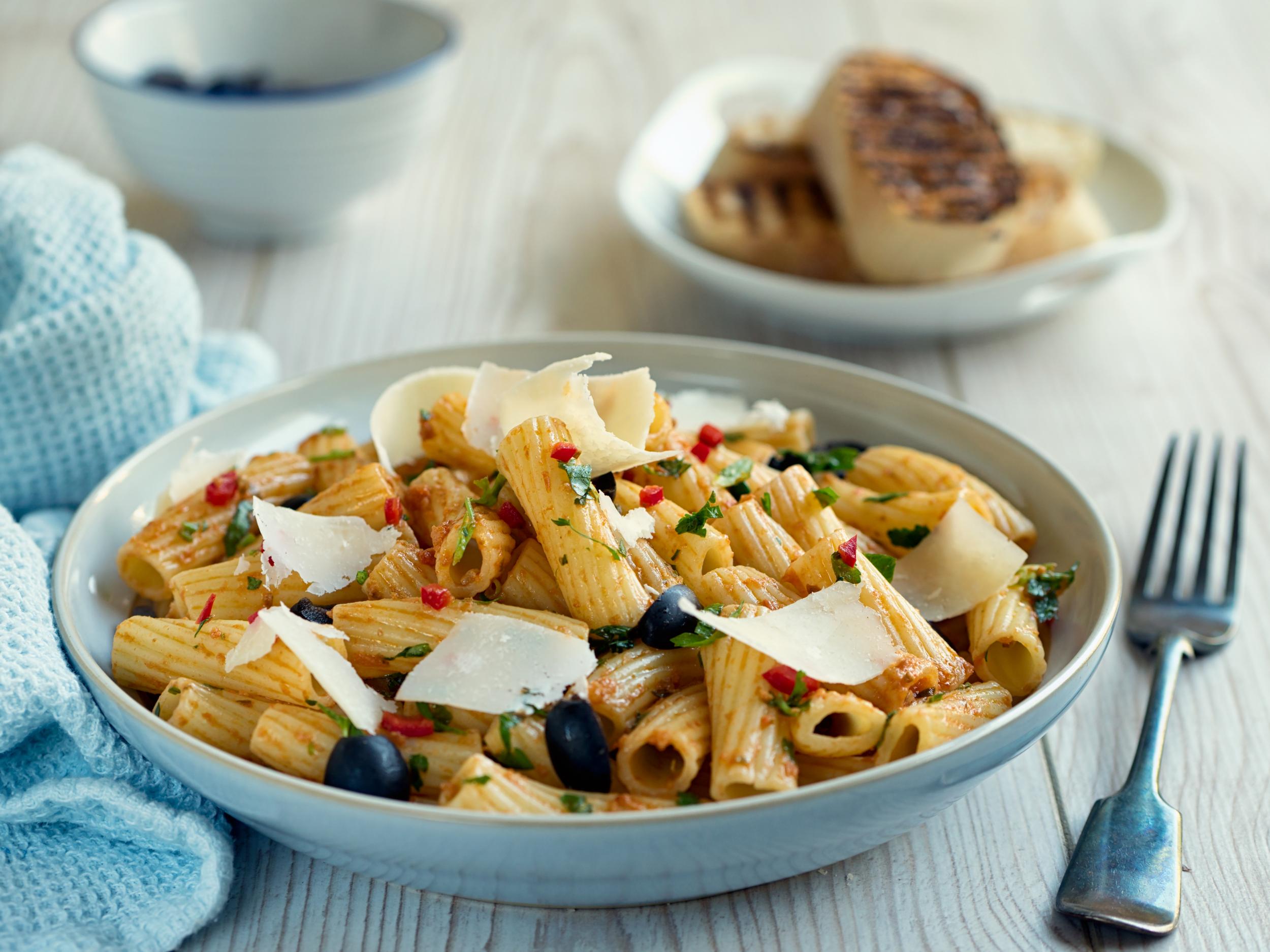The Independent's journalism is supported by our readers. When you purchase through links on our site, we may earn commission.
New food portion size guide launched to help people understand how much to eat
Nutritionists have devised a new way of measuring out food portions using your hands rather than a set of scales

The British Nutrition Foundation (BNF) has launched a “practical” guide to stop people eating too much amid the obesity crisis.
The guide – titled Find Your Balance – uses simple hand and spoon measurements to help us estimate appropriate portions, when cooking and serving food, which the BNF believes may be easier to understand and put into practice than using scales.
The guide was developed, says the BNF, to complement the government's advice on the sorts of foods to eat, as laid out in the NHS’ Eatwell Guide which provides guidance on the proportions of the main food groups that make up a healthy diet.
The organisation hopes the guide will not only help us understand “which foods to eat, but how often and in what quantities, in order to maintain a healthy weight and have a balanced diet”.
According to the guide, the correct amount of rice or pasta to eat is 180g when cooked, or equivalent to the amount that would fit in two cupped hands.
The suggested single portion of a grilled chicken breast, a cooked salmon fillet or a cooked steak is “about half the size of your hand”.
The recommended portion of fruit juice constitutes one small glass (150ml), while milk or a plant-based alternative is estimated to be the equivalent of one medium glass (200ml).
As for a baked potato, one portion should be “about the size of your fist” and cheddar cheese should be no more than “about the size of two thumbs together”
According to the government's Eatwell Guide, our diet should be made up of one-third fruit and vegetables, one-third starchy carbohydrates and the rest split between dairy and protein.
However, the new BNF guide advises people how often the suggested portions of foods from different food groups should be eaten during the day, and explains how to put this into practice with an example meal plan.
The food groups and recommended portion sizes include:
• Fruit and vegetables – 5+ portions per day
• Starchy carbohydrates – 3-4 portions per day
• Protein foods – 2-3 portions per day
• Dairy and alternatives – 2-3 portions per day
• Unsaturated oils and spreads – small amounts
Bridget Benelam, a nutrition scientist with the BNF, says people often don’t consider or understand portion sizes.
She explains: “The amount we put on our plate typically depends on the portion size we are used to consuming, how hungry we feel and how much is offered as a helping at a restaurant table or in a packet or ready meal.”
She tells the Independent: "Probably the most difficult foods to get portion size right for are those like pasta, rice and other grains that are usually not portioned out and expand a lot when cooking.
"Often the portion you put into a pan will look small and you may add more and end up cooking more than you need. Getting portion size of these foods right when cooking can really help end up with an appropriate amount for a meal."
Benelam says the BNF examined data from the National Diet and Nutrition Survey and found variations in the sizes of people’s portions.
“Our suggested portion size for cooked pasta is 180g (254 calories) but, for example, when we looked at portion sizes for spaghetti, the most commonly consumed size was 230g (324 calories), and about 10 per cent of the sample we looked at were consuming 350g as a portion, which would provide nearly 500 calories from the pasta alone, before sauces and sides were added to the meal,” she says.
"Studies have shown that putting a bigger portion on your plate will almost always mean you eat more – it takes time for the body to register that you’re full and so to avoid overeating it’s really worthwhile to check your portions before serving," she tells the Independent.
"Even if they look a bit smaller than what you’re used to, you may find that they’re filling enough."
To develop the portion size guidelines, BNF’s nutrition scientists reviewed portion size guidance from other countries, analysed portion sizes currently consumed in the UK, and the sorts of products available to buy in supermarkets.
The guide's portion sizes were modelled in test diets to ensure they could meet current food and nutrient-based recommendations.
Dr Frankie Phillips, dietician and British Dietetic Association (BDA) spokesperson, believes the guide will serve as a helpful tool for users.
She tells the Independent: "It's an individual guide that looks at a person, rather than a standard one-size fits all system."
She also advises users to be mindful when it comes to their appetite. "Our appetites fluctuate so what might be an appropriate meal one day, may vary depending on when you last ate or how much so portion sizes can vary," she adds.
Meanwhile, consultant dietician Sian Porter says using your hands to measure food portions is a "useful and practical" technique.
"You always have your hands with you and commonly used utensils like a tablespoon in the kitchen," she tells the Independent. "They can help avoid food waste and save money too potentially if you often cook too much and then throw it away."
The Find Your Balance guide is available to download here.
Subscribe to Independent Premium to bookmark this article
Want to bookmark your favourite articles and stories to read or reference later? Start your Independent Premium subscription today.

Join our commenting forum
Join thought-provoking conversations, follow other Independent readers and see their replies